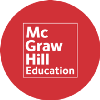Case Study: University of Milan
A need for students to use authoritative, trusted, content led to a teaching transformation and learning gain.
The University of Milan is a public teaching and research university, which — with 8 faculties and 2 schools and a teaching staff of more than 2000 professors — is distinguished by its wide variety of disciplinary fields. A leading institute in Italy and Europe for scientific productivity, the University of Milan is the largest university in the region, with approximately 64,000 students; it is also an important resource for the socio-economic context of which it is a part.
It is the only Italian university in The League of European Research Universities (LERU).
The Story / Challenge
The challenges the two instructors faced before a change in direction in their teaching were numerous. The issue with their course, they explained, was that the content it covers consists of topics that their cohort had already touched upon at High School. Expands Federica, “The fact that they knew a little about it already meant it was very hard to engage the students in their first month. The first month in general is hard because the level that the students perform at is so different, but for us it feels especially hard.”
“Ours are students in the medical school, and we know there are many other topics they have to learn that they may find more exciting.” Another problem the pair faced was the fact that their students were very reliant on the slides from their lectures rather than reading scientific topics first hand in a textbook.
“We see this course as an investment in their future. They are involved in the scientific world and it’s so important for them to be able to talk about science,
and they can’t talk about science without reading it. The fact they weren’t reading a textbook was stressful for us.”
A final element the pair needed to address was the fact that a large number of students weren’t passing their course at the end of the year. Said Roberto of their joint decision to change their course, “We decided to go with a new type of learning in order to engage them with the course, and to improve the pass rate.”
The pair set out to change their course style and spoke with a number of providers. Federica explained that she was initially “apprehensive” about the switch and believed it would be difficult to organize the assignments “but the most important thing was to get the students reading a textbook.”
The pair were impressed with the SmartBook functionality within Connect and made the decision to go with McGraw-Hill Education. “The thing that I really like about SmartBook is that it allows students to skip the things they know.” The duo added that, in addition to the digital platform’s capabilities, they were also really impressed with the flexibility McGraw-Hill Education was able to show them. Roberto commented, “We are thankful to McGraw-Hill Education as they really made an effort to support us in reaching a partnership that really worked. They were very understanding and we really appreciate it.”
The Solution
In terms of how the two have embedded their new digital solution into the course, Federica has followed a similar lesson structure and methodology as the year prior but has made the LearnSmart assignments within Connect mandatory, which enables her students to “follow” her along the programme and stopped them studying just at the end of course. Marks from the assignments contributed to the final mark.
Roberto wanted to try something totally new and explained that he had moved to a flipped classroom approach. “I gave the students 1–2 chapters ahead of a lecture as a SmartBook assignment. Then I spent half an hour covering the most important aspects of the chapter. Then we had time for questions. My preferred option was to have a student answering the questions, but if they couldn’t, I would step in. After this, we would do exercises together.”
The results
The pair commented that the results they have seen far surpassed the previous years’ and that they are “really happy” with this. “It is a good result for us,” stated Federica. At the University of Milan, students can sit for the exam of each course 6 times per academic year divided (distributed) over three sessions, and refuse the mark all the times they want if, for any reason,
they are not satisfied with it.
The pair added that they were also thrilled to see the number of passes during the first attempt of the first session.
And, added, Federica, “It’s interesting to see that the average pass mark is 28/30 which is high.” Roberto summed up his experience by saying: “Our
feeling is that there is a large margin in improvement. Moving to digital education may be harder than expected but is stimulating and rewarding. Going back, I wouldn’t change too many things simultaneously but I would rather try to be more gradual.”
Federica concluded in a similar vein saying, “Seeing the improvements in the students’ performances definitively paid for the initial effort that we had to put in switching to Connect. Once you get acquainted with the system, it turns out to be very easy to handle, and the students were more engaged.”
